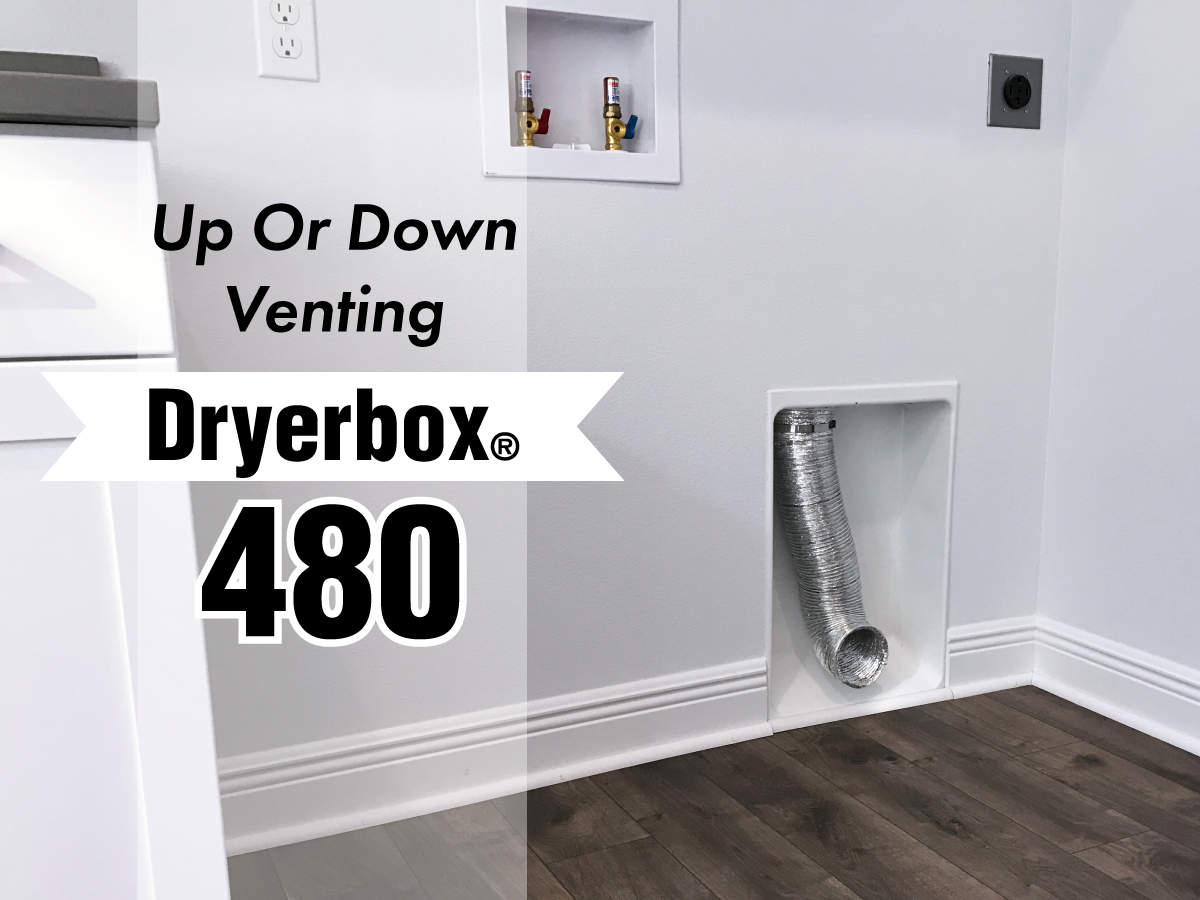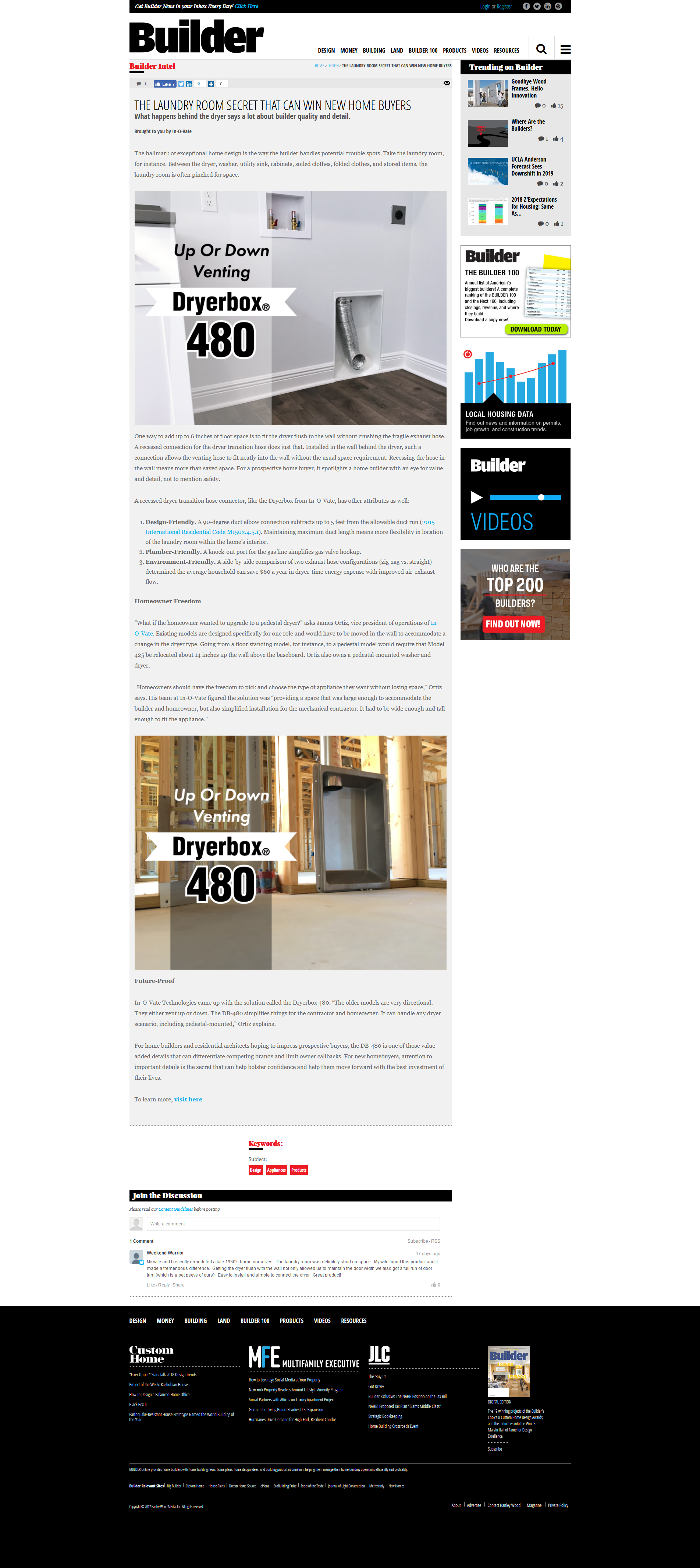
What happens behind the dryer says a lot about builder quality and detail.
The hallmark of exceptional home design is the way the builder handles potential trouble spots. Take the laundry room, for instance. Between the dryer, washer, utility sink, cabinets, soiled clothes, folded clothes, and stored items, the laundry room is often pinched for space.

One way to add up to 6 inches of floor space is to fit the dryer flush to the wall without crushing the fragile exhaust hose. A recessed connection for the dryer transition hose does just that. Installed in the wall behind the dryer, such a connection allows the venting hose to fit neatly into the wall without the usual space requirement. Recessing the hose in the wall means more than saved space. For a prospective home buyer, it spotlights a home builder with an eye for value and detail, not to mention safety.
A recessed dryer transition hose connector, like the Dryerbox from In-O-Vate, has other attributes as well:
- Design-Friendly. A 90-degree duct elbow connection subtracts up to 5 feet from the allowable duct run (2015 International Residential Code M1502.4.5.1). Maintaining maximum duct length means more flexibility in location of the laundry room within the home’s interior.
- Plumber-Friendly. A knock-out port for the gas line simplifies gas valve hookup.
- Environment-Friendly. A side-by-side comparison of two exhaust hose configurations (zig-zag vs. straight) determined the average household can save $60 a year in dryer-time energy expense with improved air-exhaust flow.
Homeowner Freedom
“What if the homeowner wanted to upgrade to a pedestal dryer?” asks James Ortiz, vice president of operations of In-O-Vate. Existing models are designed specifically for one role and would have to be moved in the wall to accommodate a change in the dryer type. Going from a floor standing model, for instance, to a pedestal model would require that Model 425 be relocated about 14 inches up the wall above the baseboard. Ortiz also owns a pedestal-mounted washer and dryer.
“Homeowners should have the freedom to pick and choose the type of appliance they want without losing space,” Ortiz says. His team at In-O-Vate figured the solution was “providing a space that was large enough to accommodate the builder and homeowner, but also simplified installation for the mechanical contractor. It had to be wide enough and tall enough to fit the appliance.”

Future-Proof
In-O-Vate Technologies came up with the solution called the Dryerbox 480. “The older models are very directional. They either vent up or down. The DB-480 simplifies things for the contractor and homeowner. It can handle any dryer scenario, including pedestal-mounted,” Ortiz explains.
For home builders and residential architects hoping to impress prospective buyers, the DB-480 is one of those value-added details that can differentiate competing brands and limit owner callbacks. For new homebuyers, attention to important details is the secret that can help bolster confidence and help them move forward with the best investment of their lives.
To learn more, visit here.
Weekend Warrior wrote:
My wife and I recently remodeled a late 1930's home ourselves. The laundry room was definitely short on space. My wife found this product and it made a tremendous difference. Getting the dryer flush with the wall not only allowed us to maintain the door width we also got a full run of door trim (which is a pet peeve of ours). Easy to install and simple to connect the dryer. Great product!
This article was featured on Builder's website:



